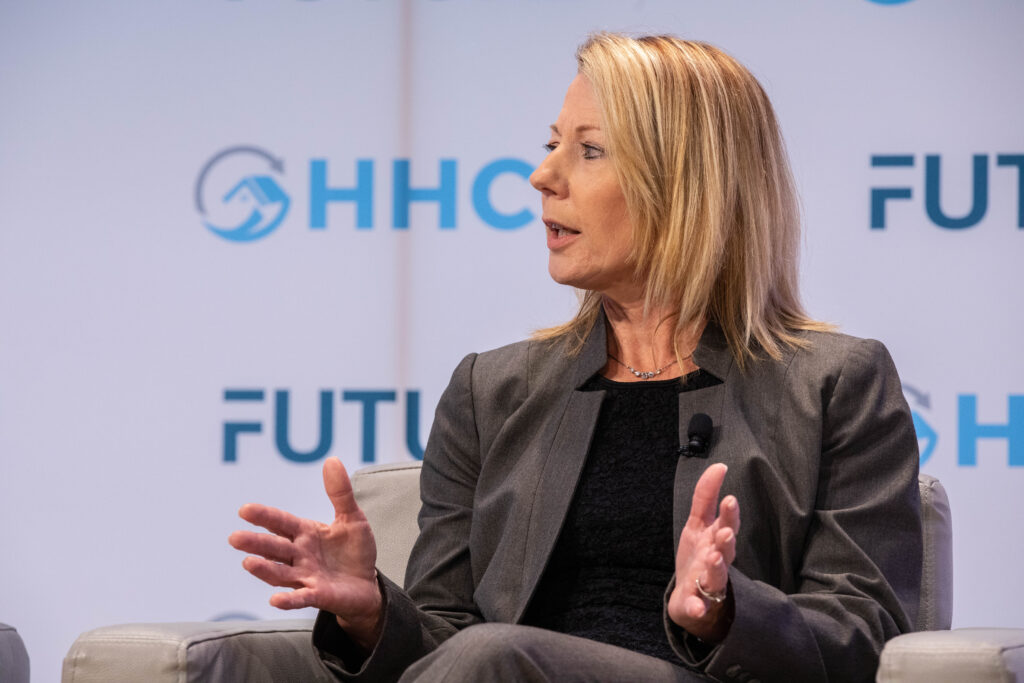Even given the home health reimbursement environment, Enhabit Inc. (NYSE: EHAB) still plans to be acquisitive in the home health market as a way to stay on its growth strategy track.
It may still be too early to tell if the industry will see continued consolidation, but Enhabit COO Crissy Carlisle believes the home health company will use its cash flow to acquire sooner rather than later.
“From our standpoint, we’re certainly still interested in being acquisitive,” Carlisle said at the Credit Suisse Healthcare Conference Tuesday. “We do have certain criteria in regards to the acquisitions that we want to consider and we’re going to make sure they check all of those boxes if it’s a home health opportunity. Right now, we still believe that the best use of our free cash flow is to be acquisitive. It’s a long-term growth strategy and a long-term growth story.”
At the same time, large home health providers like Enhabit have to be upfront with possible sellers about the reimbursement uncertainty that comes with making deals these days. In other words, multiples may not be as high as they previously were.
“That’s going to have to be considered when we do our analysis of any company,” Carlisle said. “We also can’t assume anything else is going to happen in 2024 and beyond.”
While the final rule from the U.S. Centers for Medicare & Medicaid Services (CMS) was better — in some ways — than the proposed rule, it still presents challenges for Enhabit.
“We’re certainly seeing it as a reprieve,” Enhabit CEO Barb Jacobsmeyer said. “Obviously we love that we’re getting a 0.7% increase instead of a 4.2% decline. I think what’s most frightening for the industry, though, is that CMS continues to say that they feel that they have overpaid by 7.85%. So the biggest concern is the potential clawback. I think that’s where we’ll want to continue to fight as an industry. With a reprieve for 2023, there’s still a lot looming out there.”
At the conference, Jacobsmeyer touted some of the hiring improvements Enhabit has made over the last six months by offering more flexible schedules to its caregivers.
However, that flexibility presents challenges as well.
“Last year around this time, about 36% of our nursing workforce was PRN,” Jacobsmeyer said. “Right now, it’s a little over 40%. That’s great because it shows that offering that flexibility has helped. The bad side is we then need a higher headcount of nurses. That flexibility means they can decide, ‘I don’t want to work the last two weeks of the year.’ To really be able to commit to our referral sources, we need to have a good balance.”
Enhabit has also had to increase wages for its employees to stay competitive. Year to date, wages have increased between 5% and 6% at Enhabit and wages in certain areas of the country could increase even more, Carlisle said.
“We feel pretty good about where we are on that national level as we head into 2023 and we’re hopeful that [our current rates] are going to level out,” Carlisle said. “Having said that, we do expect there will be markets where we have to continue to make adjustments, depending on the geographic area and demand of nurses in that area.”
It’s also important for Enhabit to optimize its workforce as much as possible as the volume and demand for care rises.
“When you have clinical capacity issues, you’re just trying to send someone to do the visit,” Carlisle said. “As volumes continue to grow and increase, then you’re able to actually optimize your staff, meaning that we send an RN to do an RN’s work and LN to do an LN’s work. As we head into 2023, those are some of the things that we’re going to be looking at to help with that cost structure.”
Medicare Advantage beneficiaries continue to represent more of Enhabit’s patients as well.
Given that trend, the company has been at the table with MA plans in an effort to try to get more favorable, sensical reimbursement.
“From 2020 to 2021, we saw an over 11% increase in MA beneficiaries in the markets we serve,” Jacobsmeyer said. “We saw a decline of 4.1% of traditional Medicare, so we’re certainly feeling the shift in our local markets in MA versus traditional Medicare. We’re seeing that in our referrals and in our admissions.”
Jacobsmeyer also hinted at the possibility of making a deal with Aetna following the Amedisys contract that was signed earlier this year.
“We don’t have the details of the contract, but you can imagine that day, we’re calling out and saying, ‘Hey, can we come back to the table? Obviously you’ve figured out a case rate, so we’d like to sit and talk,’” Jacobsmeyer said. “Certainly, if they’re able to go the route of episodic or case rate, we want to be at the table talking to them.”




